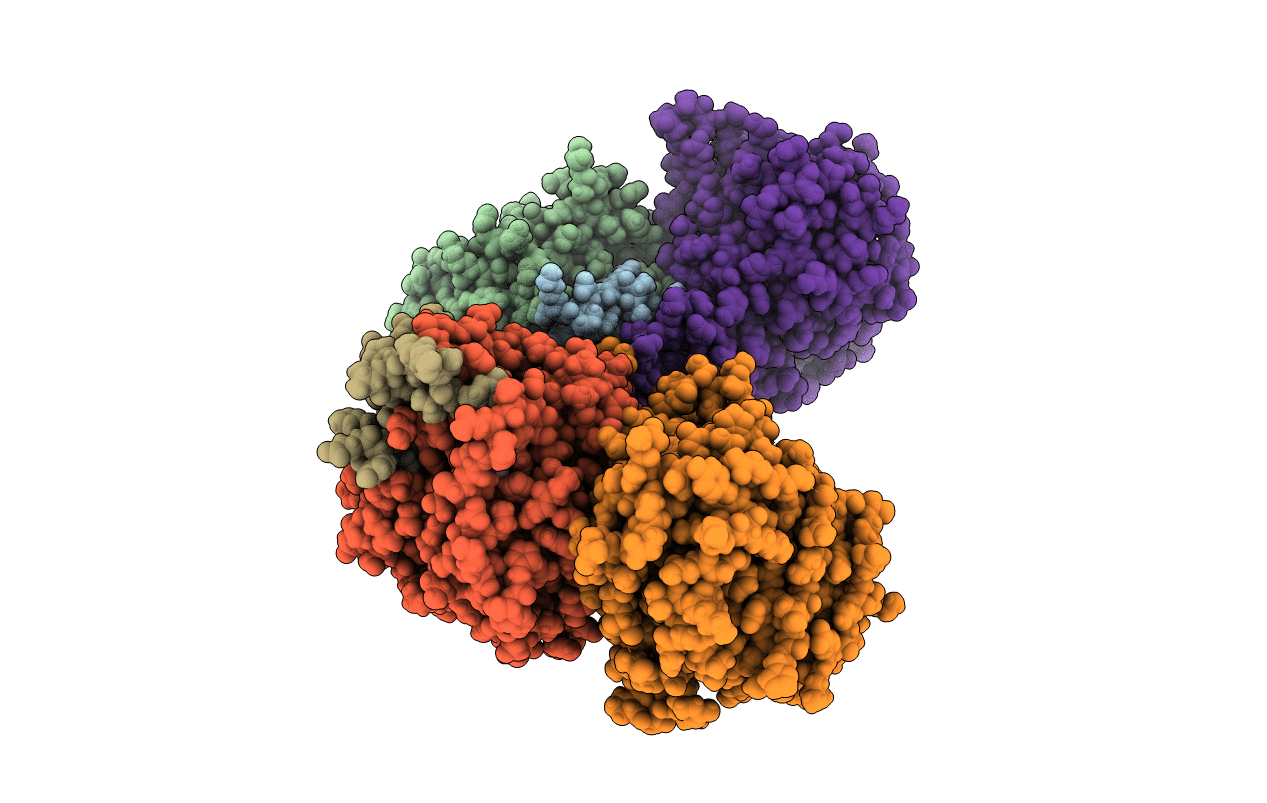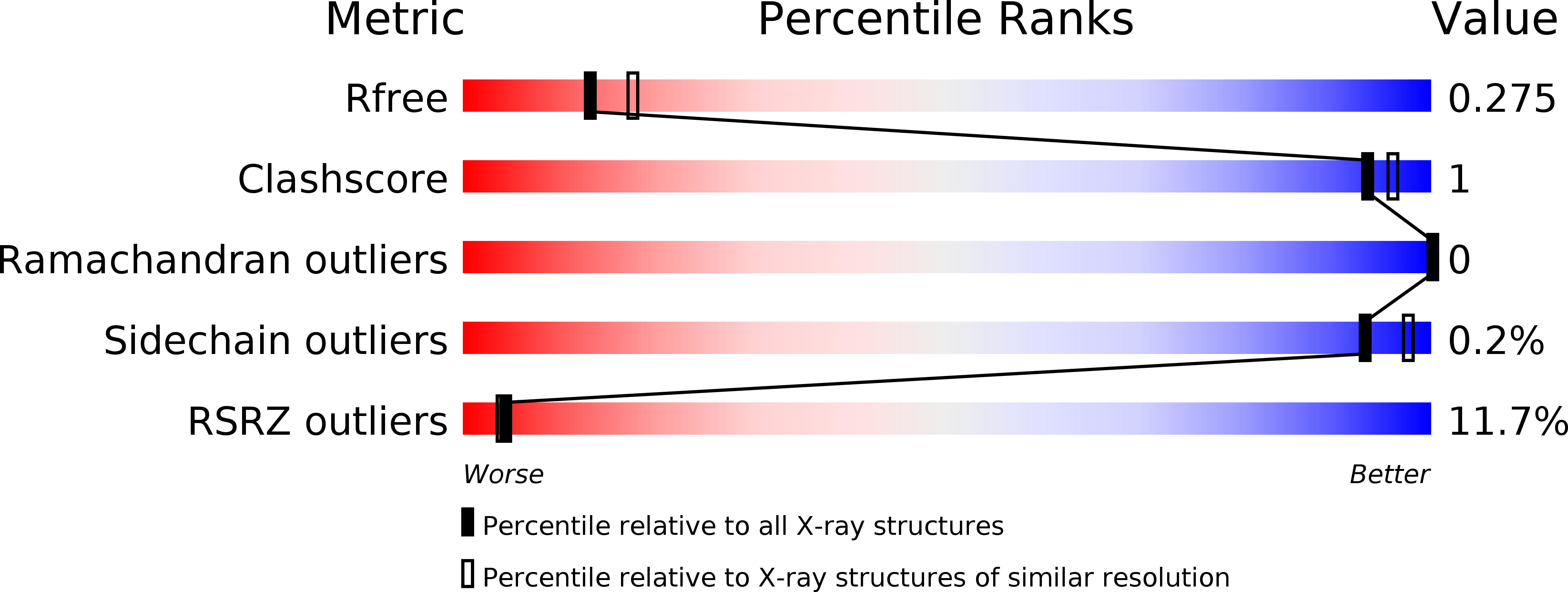
Deposition Date
2016-11-09
Release Date
2017-01-11
Last Version Date
2024-11-13
Entry Detail
PDB ID:
5TVM
Keywords:
Title:
Crystal structure of Trypanosoma brucei AdoMetDC/prozyme heterodimer
Biological Source:
Source Organism:
Host Organism:
Method Details:
Experimental Method:
Resolution:
2.41 Å
R-Value Free:
0.27
R-Value Work:
0.22
R-Value Observed:
0.23
Space Group:
P 1 21 1


